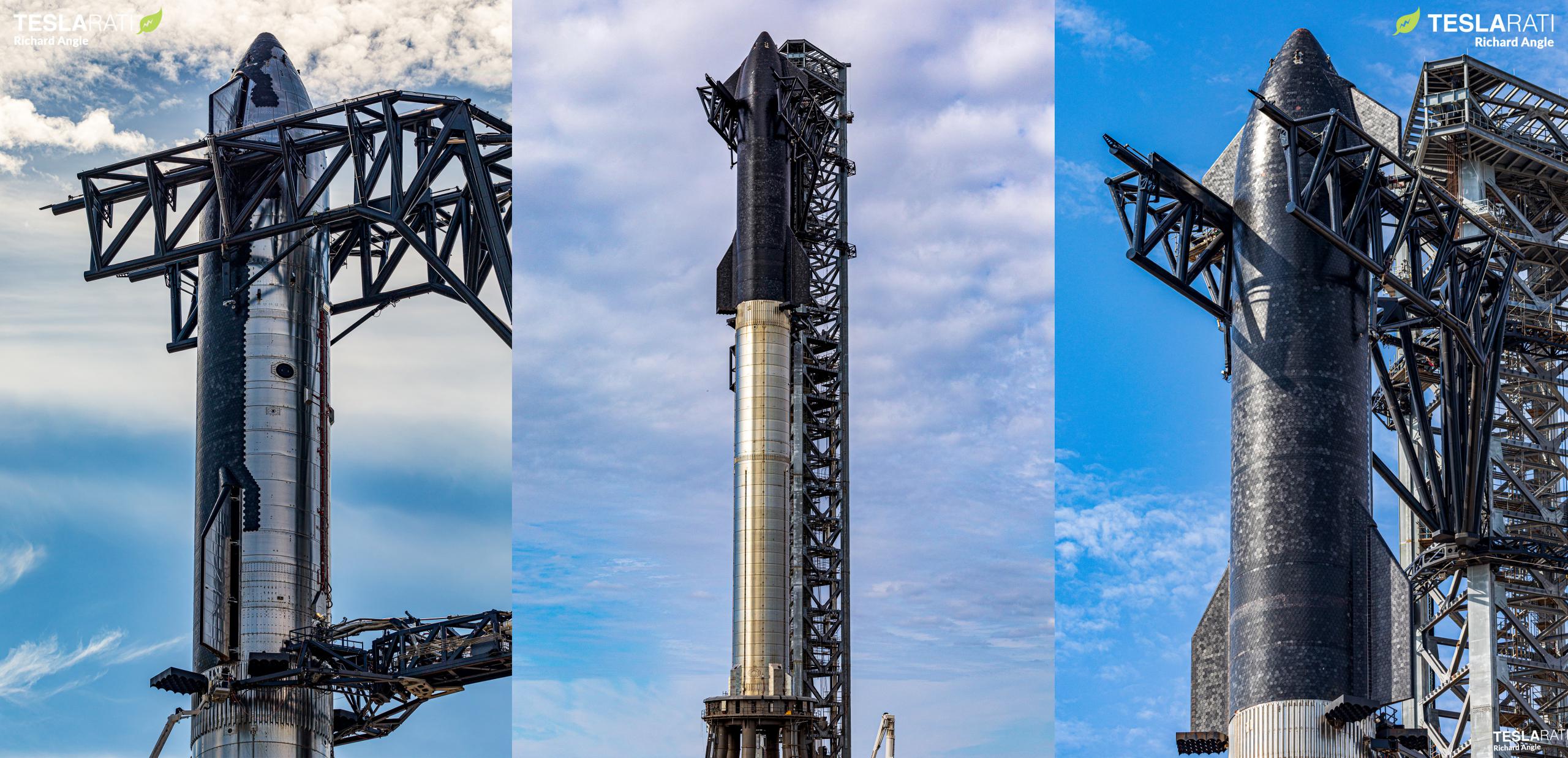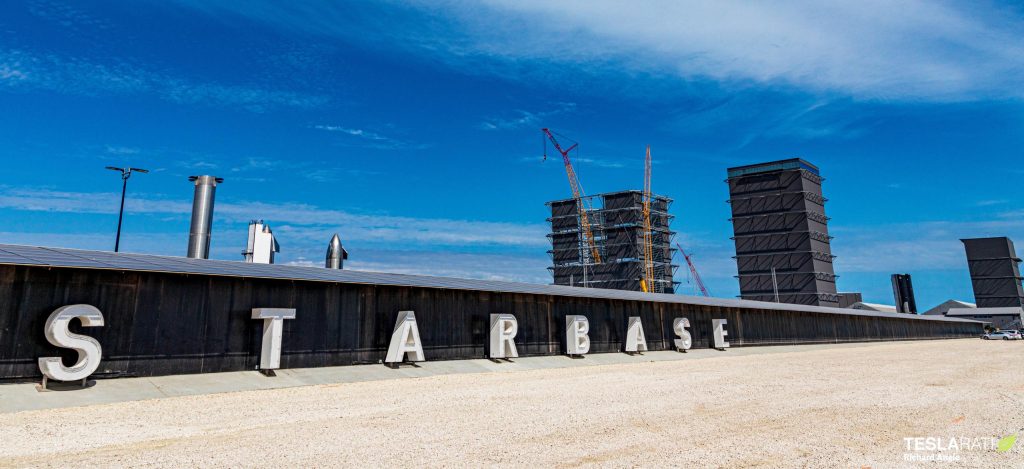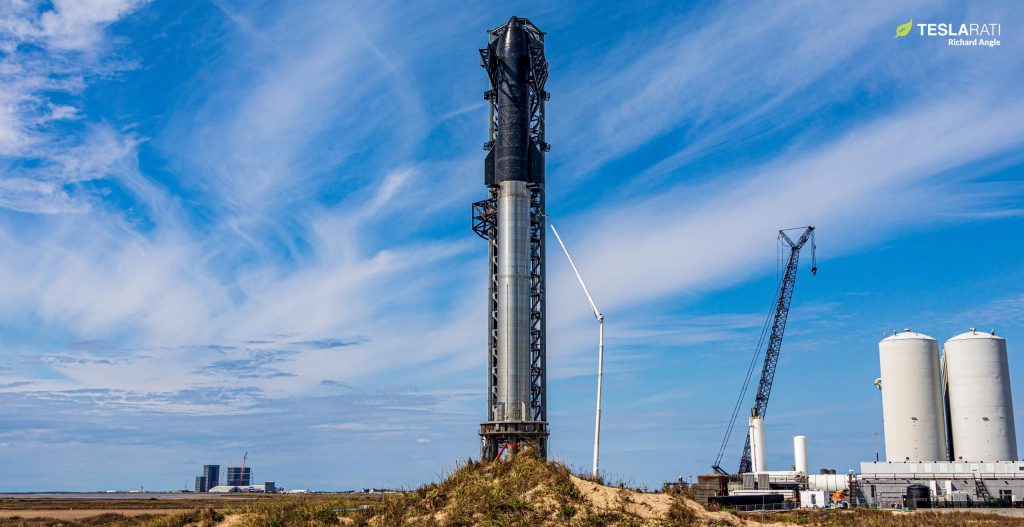

News
SpaceX CEO Elon Musk to present first Starship update since 2019 [webcast]
Barring surprises, SpaceX CEO Elon Musk remains on track to present the first major update on Starship’s development since September 2019 – almost two and a half years ago.
While it’s no longer clear that SpaceX will be able to stack Starship on top of Super Heavy in time for the fully-stacked rocket to serve as an imposing backdrop for the media event, Musk seemingly remains on track to update the world on the status of Starship development as early as 8pm CT (6pm PT, 9pm ET) on Thursday, February 10th (02:00 UTC 11 Feb). Assuming the event is similar to the SpaceX CEO’s first four major Starship presentations, it will be broadcast live to the world on the company’s YouTube channel.
Musk first revealed SpaceX’s detailed plans for a massive, fully-reusable Mars rocket in September 2016. At that point, the rocket – known as the Interplanetary Transport System (ITS) – was to be 12 meters (39 ft) in diameter, 122 meters (400 ft) tall, and made almost entirely out of carbon-fiber composites. In theory, it would have been able to launch up to 300 tons (660,000 lb) to low Earth orbit (LEO) – twice the payload of Saturn V, the next most capable rocket.
In 2017, SpaceX slightly pared back its ambition with a vehicle known as BFR, measuring 9m wide and 106m tall with about a third fewer Raptor engines and estimated performance of ~130 tons (285,000 lb) to LEO. In 2018, on top of announcing Japanese billionaire Yusaku Maezawa’s circumlunar DearMoon mission and BFR’s first real launch contract, SpaceX updated BFR’s design, stretching the booster 12 meters for a total height of 118m (390 ft) and hedging its performance figures with an estimate of 100 tons to LEO in a fully-reusable configuration.
Around the same time as Musk’s 2018 BFR presentation, though, the SpaceX CEO made the decision to entirely scrap the rocket’s composites-heavy design, renaming the rocket ‘Starship’ and replacing the material with stainless steel – effectively reverting structures development to the drawing board. The principles of the rocket, its general shape and layout, and the Raptor engine powering it remained the same. Thanks to steel’s extreme affordability relative to cutting-edge composites, SpaceX was able to make rapid progress and ultimately flew Starhopper – a steel water-tower-esque rocket powered by Raptor – less than a year later in July and August 2019.
Less than a year after Starhopper’s 150m (~500 ft) hop, SpaceX successfully hopped a far more mature Starship prototype known as SN5, which relied on far thinner steel and effectively amounted to a full prototype of the tank section of an orbital-class ship. Just a month later, in September 2020, SpaceX repeated the feat with an entirely different Starship prototype, demonstrating repeatability both in production and flight. Three months later, Starship SN8 – featuring flaps, a nosecone, header tanks, and two more Raptor engines – nearly aced its launch debut. In May 2021, after three more failed test flights, Starship SN15 stuck the landing and survived a 10 km launch, more or less fully demonstrating the rocket’s exotic skydiver-style descent and last-second flip for a vertical landing.
Visible progress has slowed and flight testing has halted since SpaceX began pushing for the first orbital Starship test flight in mid-2021. The company decided against reusing Starship SN15 and also chose not to attempt to replicate the ship’s successful landing with Starship SN16, which was ready for testing a matter of days after. Instead, SpaceX has focused on constructing the orbital launch site and slowly finished Starship S20 and Super Heavy B4 – a pair once expected to support the first orbital test flight. While slow compared to all previous Starship prototypes, Ship 20 has nonetheless made excellent progress and is effectively fully ready for a serious flight test. Booster 4, on the other hand, has barely completed cryogenic proof testing and has yet to perform even a partial wet dress rehearsal (with live propellant) or attempt a single static fire test in last five months.
In short, the status of Starship development – and, especially, Booster 4, Ship 20, and the first orbital test flight – has gotten quite a bit murkier over the last several months. February 9th and 10th marked a welcome change of pace, with SpaceX sailing through the very first attempt at stacking Starship hardware with Starbase’s ‘orbital integration tower’ (launch tower) and a trio of giant, robotic arms. Just a handful of hours after the first ‘arm lift’ began, Starship S20 was safely stacked atop Super Heavy Booster 4, assembling the largest rocket in the world for the second time this year.
With any luck, SpaceX CEO Elon Musk’s first presentation in two and a half years – scheduled no earlier than 8pm CST (02:00 UTC) – will shed further light on the company’s progress towards orbital test flights.


Elon Musk
Tesla reveals it is using AI to make factories more sustainable: here’s how
Tesla is using AI in its Gigafactory Nevada factory to improve HVAC efficiency.

Tesla has revealed in its Extended Impact Report for 2024 that it is using Artificial Intelligence (AI) to enable its factories to be more sustainable. One example it used was its achievement of managing “the majority of the HVAC infrastructure at Gigafactory Nevada is now AI-controlled” last year.
In a commitment to becoming more efficient and making its production as eco-friendly as possible, Tesla has been working for years to find solutions to reduce energy consumption in its factories.
For example, in 2023, Tesla implemented optimization controls in the plastics and paint shops located at Gigafactory Texas, which increased the efficiency of natural gas consumption. Tesla plans to phase out natural gas use across its factories eventually, but for now, it prioritizes work to reduce emissions from that energy source specifically.
It also uses Hygrometric Control Logic for Air Handling Units at Giafactory Berlin, resulting in 17,000 MWh in energy savings each year. At Gigafactory Nevada, Tesla saves 9.5 GWh of energy through the use of N-Methylpyrrolidone refineries when extracting critical raw material.
Perhaps the most interesting way Tesla is conserving energy is through the use of AI at Gigafactory Nevada, as it describes its use of AI to reduce energy demand:
“In 2023, AI Control for HVAC was expanded from Nevada and Texas to now include our Berlin-Brandenburg and Fremont factories. AI Control policy enables HVAC systems within each factory to work together to process sensor data, model factory dynamics, and apply control actions that safely minimize the energy required to support production. In 2024, this system achieved two milestones: the majority of HVAC infrastructure at Gigafactory Nevada is now AI-controlled, reducing fan and thermal energy demand; and the AI algorithm was extended to manage entire chiller plants, creating a closed-loop control system that optimizes both chilled water consumption and the energy required for its generation, all while maintaining factory conditions.”
Tesla utilizes AI Control “primarily on systems that heat or cool critical factory production spaces and equipment.” AI Control communicates with the preexisting standard control logic of each system, and any issues can be resolved by quickly reverting back to standard control. There were none in 2024.
Tesla says that it is utilizing AI to drive impact at its factories, and it has proven to be a valuable tool in reducing energy consumption at one of its facilities.
Elon Musk
Tesla analysts believe Musk and Trump feud will pass
Tesla CEO Elon Musk and U.S. President Donald Trump’s feud shall pass, several bulls say.

Tesla analysts are breaking down the current feud between CEO Elon Musk and U.S. President Donald Trump, as the two continue to disagree on the “Big Beautiful Bill” and its impact on the country’s national debt.
Musk, who headed the Department of Government Efficiency (DOGE) under the Trump Administration, left his post in May. Soon thereafter, he and President Trump entered a very public and verbal disagreement, where things turned sour. They reconciled to an extent, and things seemed to be in the past.
However, the second disagreement between the two started on Monday, as Musk continued to push back on the “Big Beautiful Bill” that the Trump administration is attempting to sign into law. It would, by Musk’s estimation, increase spending and reverse the work DOGE did to trim the deficit.
Every member of Congress who campaigned on reducing government spending and then immediately voted for the biggest debt increase in history should hang their head in shame!
And they will lose their primary next year if it is the last thing I do on this Earth.
— Elon Musk (@elonmusk) June 30, 2025
President Trump has hinted that DOGE could be “the monster” that “eats Elon,” threatening to end the subsidies that SpaceX and Tesla receive. Musk has not been opposed to ending government subsidies for companies, including his own, as long as they are all abolished.
How Tesla could benefit from the ‘Big Beautiful Bill’ that axes EV subsidies
Despite this contentious back-and-forth between the two, analysts are sharing their opinions now, and a few of the more bullish Tesla observers are convinced that this feud will pass, Trump and Musk will resolve their differences as they have before, and things will return to normal.
ARK Invest’s Cathie Wood said this morning that the feud between Musk and Trump is another example of “this too shall pass:”
BREAKING: CATHIE WOOD SAYS — ELON AND TRUMP FEUD “WILL PASS” 👀 $TSLA
She remains bullish ! pic.twitter.com/w5rW2gfCkx
— TheSonOfWalkley (@TheSonOfWalkley) July 1, 2025
Additionally, Wedbush’s Dan Ives, in a note to investors this morning, said that the situation “will settle:”
“We believe this situation will settle and at the end of the day Musk needs Trump and Trump needs Musk given the AI Arms Race going on between the US and China. The jabs between Musk and Trump will continue as the Budget rolls through Congress but Tesla investors want Musk to focus on driving Tesla and stop this political angle…which has turned into a life of its own in a roller coaster ride since the November elections.”
Tesla shares are down about 5 percent at 3:10 p.m. on the East Coast.
Elon Musk
Tesla scrambles after Musk sidekick exit, CEO takes over sales
Tesla CEO Elon Musk is reportedly overseeing sales in North America and Europe, Bloomberg reports.

Tesla scrambled its executives around following the exit of CEO Elon Musk’s sidekick last week, Omead Afshar. Afshar was relieved of his duties as Head of Sales for both North America and Europe.
Bloomberg is reporting that Musk is now overseeing both regions for sales, according to sources familiar with the matter. Afshar left the company last week, likely due to slow sales in both markets, ending a seven-year term with the electric automaker.
Tesla’s Omead Afshar, known as Elon Musk’s right-hand man, leaves company: reports
Afshar was promoted to the role late last year as Musk was becoming more involved in the road to the White House with President Donald Trump.
Afshar, whose LinkedIn account stated he was working within the “Office of the CEO,” was known as Musk’s right-hand man for years.
Additionally, Tom Zhu, currently the Senior Vice President of Automotive at Tesla, will oversee sales in Asia, according to the report.
It is a scramble by Tesla to get the company’s proven executives over the pain points the automaker has found halfway through the year. Sales are looking to be close to the 1.8 million vehicles the company delivered in both of the past two years.
Tesla is pivoting to pay more attention to the struggling automotive sales that it has felt over the past six months. Although it is still performing well and is the best-selling EV maker by a long way, it is struggling to find growth despite redesigning its vehicles and launching new tech and improvements within them.
The company is also looking to focus more on its deployment of autonomous tech, especially as it recently launched its Robotaxi platform in Austin just over a week ago.
However, while this is the long-term catalyst for Tesla, sales still need some work, and it appears the company’s strategy is to put its biggest guns on its biggest problems.
-

 Elon Musk1 day ago
Elon Musk1 day agoTesla investors will be shocked by Jim Cramer’s latest assessment
-

 News6 days ago
News6 days agoTesla Robotaxi’s biggest challenge seems to be this one thing
-

 News2 weeks ago
News2 weeks agoTesla’s Grok integration will be more realistic with this cool feature
-

 Elon Musk2 weeks ago
Elon Musk2 weeks agoElon Musk slams Bloomberg’s shocking xAI cash burn claims
-

 News2 weeks ago
News2 weeks agoTesla China roars back with highest vehicle registrations this Q2 so far
-

 News2 weeks ago
News2 weeks agoTexas lawmakers urge Tesla to delay Austin robotaxi launch to September
-

 News2 weeks ago
News2 weeks agoTesla dominates Cars.com’s Made in America Index with clean sweep
-

 Elon Musk1 week ago
Elon Musk1 week agoFirst Look at Tesla’s Robotaxi App: features, design, and more














